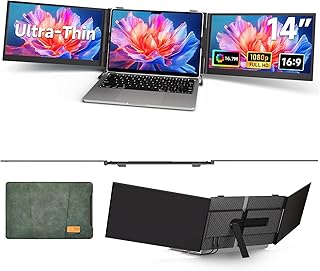Laptops have become an indispensable part of our daily lives, often the first device we reach for in the morning. In 2025, we witness a significant evolution in laptop technology with the introduction of foldable screens and dual-display designs. These innovations are reshaping the landscape of flexibility and productivity in the tech industry.
One of the key advancements driving this transformation is the launch of “Copilot+PCs” by Microsoft. This system incorporates powerful chips with on-device AI acceleration, resulting in thinner machines, extended battery life, and intelligent software features that enhance user experience. This marks a pivotal moment in the development of faster, more efficient Windows PCs.
Following a post-pandemic slump, the PC market is experiencing a resurgence, encouraging manufacturers to explore innovative form factors. The integration of new silicon components has led to improved performance and battery life, opening up possibilities for laptop makers to push boundaries and introduce cutting-edge features.
Foldable laptops, reminiscent of booklets, offer a unique proposition with large OLED panels that fold in half, enhancing portability and versatility. Models like the HP Spectre Foldable 17 and Lenovo ThinkPad X1 Fold 16 exemplify this trend, emphasizing flexibility over traditional benchmarks.
The appeal of foldable laptops lies in their adaptability, allowing users to switch between different configurations for various tasks. While early models faced limitations such as fewer ports and high price tags, they showcased the potential for a new era of portable computing.
On the other hand, dual-display laptops like the Asus Zenbook Duo and Lenovo Yogabook 9i provide users with two separate OLED screens and innovative keyboard configurations. These devices cater to multitasking needs, offering a portable studio-like experience for creative professionals and enthusiasts.
Despite their impressive features, dual-display laptops face challenges such as battery life concerns, especially with high-resolution OLED screens. Manufacturers are constantly refining their designs to optimize performance and usability, with a focus on enhancing user experience and productivity.
When it comes to choosing between foldable and dual-display laptops, the decision largely depends on users’ preferences and work requirements. Foldable laptops excel in portability and comfort, ideal for tasks like tablet sketching and document review. In contrast, dual-display laptops are preferred by those who value multitasking and require multiple screens for enhanced productivity.
In conclusion, the laptop landscape in mid-2025 offers a diverse range of options beyond traditional clamshell designs. Foldable and dual-display laptops represent a new era of innovative computing, supported by efficient chips and a rejuvenated industry mindset. These designs not only look futuristic but also offer practical solutions for users seeking enhanced creativity and productivity in their daily tasks.
📰 Related Articles
- Microsoft’s Carl Ledbetter Reflects on Gaming Hardware Evolution
- Industry Giants Poised to Lead AI SEO Evolution
- Belts Regain Fashion Status, Celebrities Lead Trend Evolution
- Yvette Crocker’s Tsion Rocks Jewelry: Artistic Evolution and Celebrity Appeal
- Yasmin Pettet & Jamie Rhodes Lead Love Island 2025 Favorites






